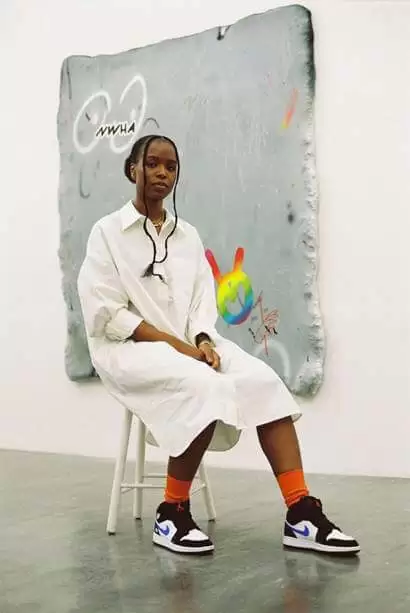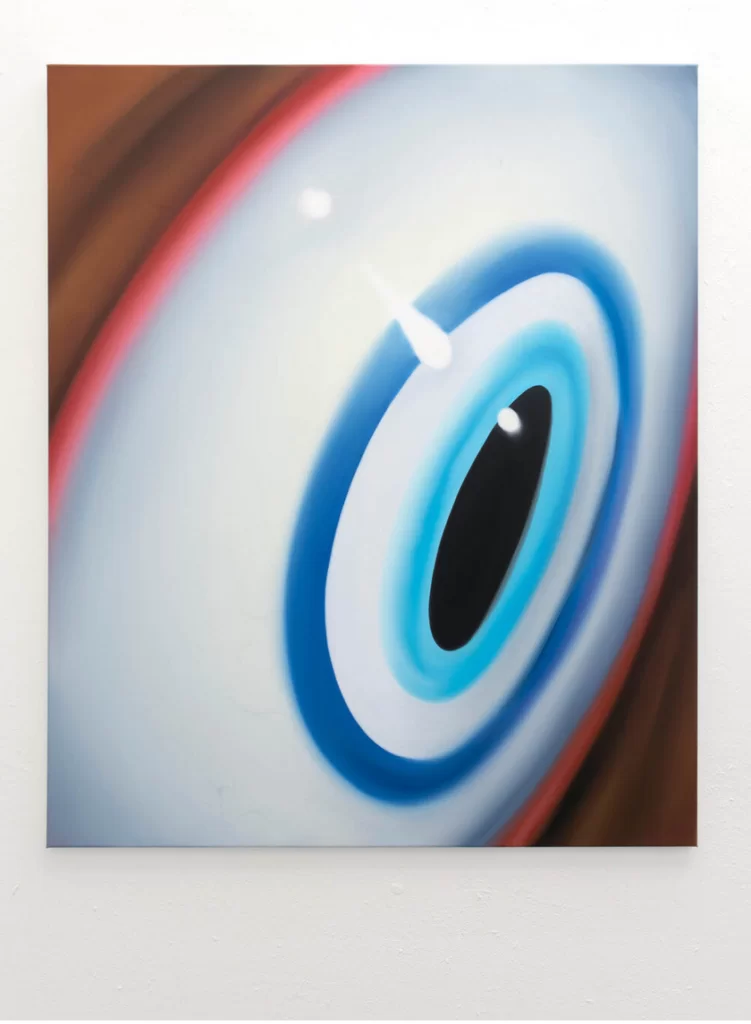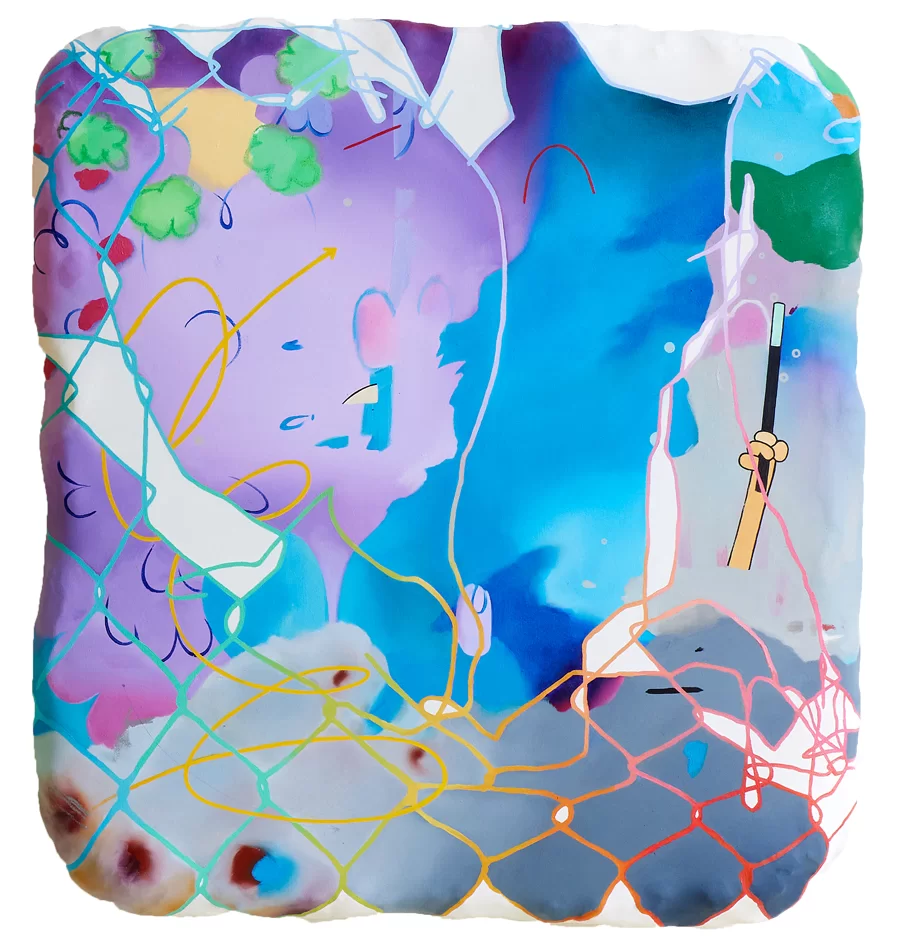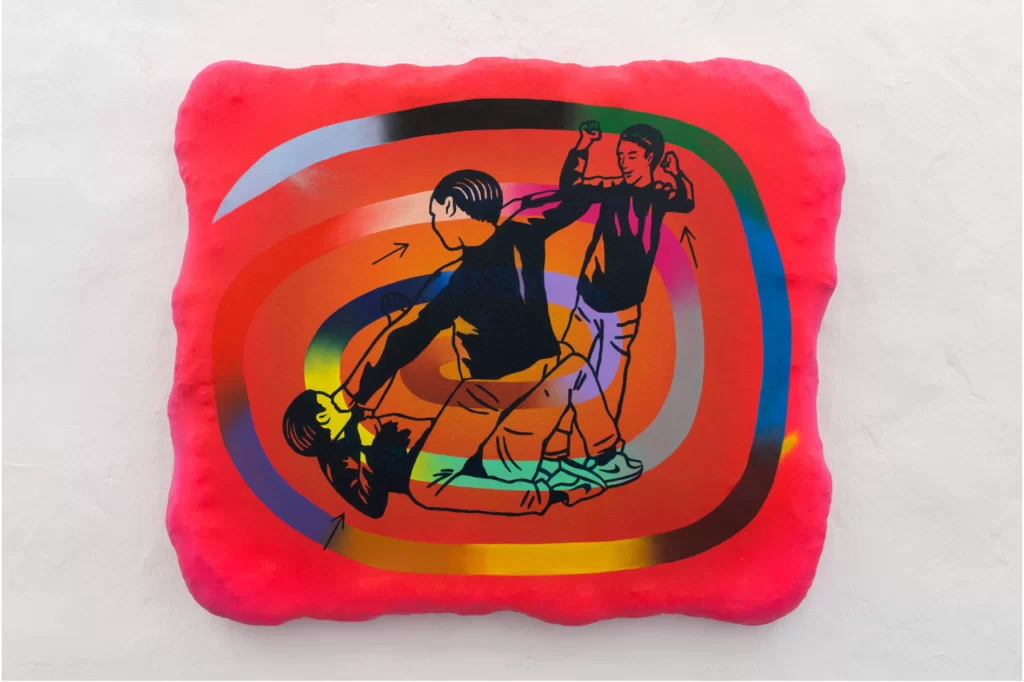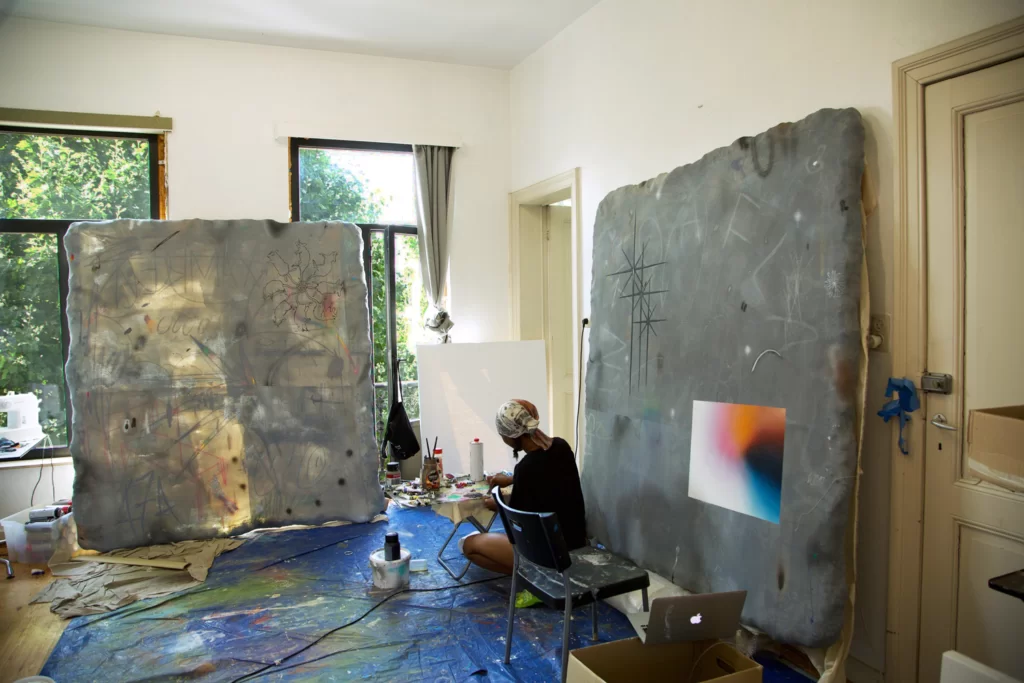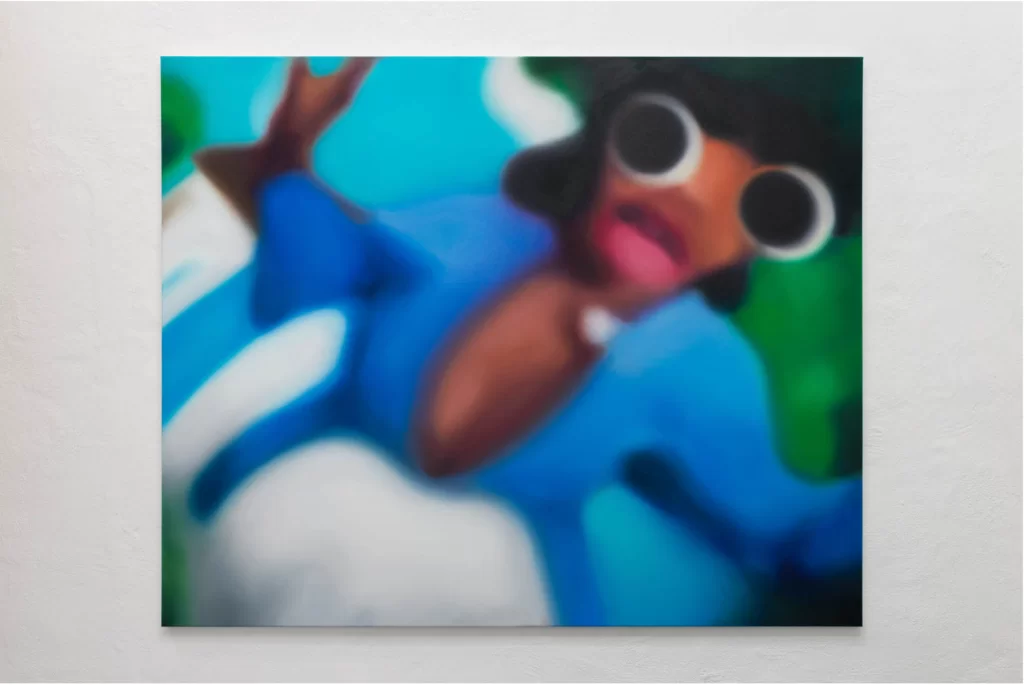Belgium-based artist Nokukhanya Langa‘s artistic practice is influenced by her life experiences, mixed cultural heritage and internet culture. She fearlessly explores these facets of her identity throughout her work, shying away from traditional notions of painting. Langa brings these fragments together in an intriguing cohesive aesthetic that is instantly recognisable.
I always had things that I fixated on, and drawing was one of my obsessions
Nokukhanya Langa
Langa views her paintings as a web browser with multiple tabs; each tab is an alternative view of exploration. Yet Langa’s choice of canvas ignites the abstract allure; its shape is unorthodox, the edges uneven, slightly raised surfaces submerged in gradient colours. Sets the tone of her playful visual language, flush with strips of colour, motifs, and cheeky humour, provides a layer of curiosity for the viewer.
Her first UK solo exhibition with forward-thinking Saatchi Yates sees Langa delve into the realms of internet culture and personal experience. The work on display builds on the body of work she presented at the Melly Museum in Rotterdam earlier this year. We caught up with Langa during her exhibition to learn more about her practice, creative process and what’s next for her as an artist.
Nokukhanya Langa’s exhibition at Saatchi Yates is open until Tuesday 15 November 2022.
Q: Hi Nokukhanya! How are you doing? Thank you for taking the time out to speak with us. Can you please introduce yourself for those who do not know you?
A: Hi, I’m Noku, and I make paintings. I’m South African and American. I’m currently based between Gent, Belgium and Rotterdam, The Netherlands. The story of how I ended up there is convoluted and full of suspense.
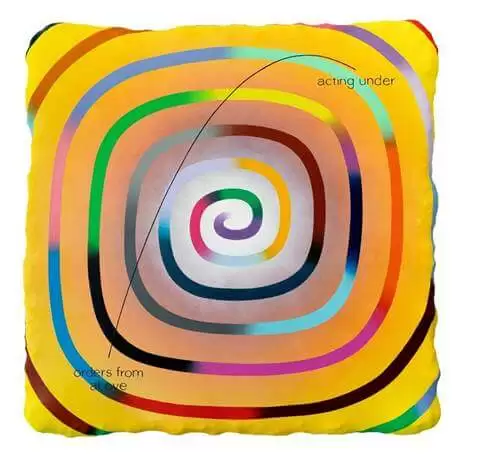
Q: Can you tell us how you started in arts, how art has played a role in your life, and why you decided to become an artist?
A: I think it starts early for many artists, and I was no different. I always had things that I fixated on, and drawing was one of my obsessions. Watching someone draw was the most captivating thing to me. I moved around a lot which can make it hard to have continuity in your surroundings or life, but drawing and creating things was always a constant, and it really grounded me when everything else didn’t make sense.
Sometimes I felt that I couldn’t really understand my new surroundings all that well, but I could always fall into my personal world of drawing and creating where none of that mattered anyway. At some point, I realised that no matter what direction my life went in, this thing that eventually became ‘art’ would always be a constant, so I decided to give as much energy to it as it gave me.
Q: Your practice represents a visual account encapsulating your mixed cultural heritage and life experiences. These elements signify your interest in the loss of the image by extension of reality. Can you tell us more about your practice, artistic approach and inspiration?
A: I think when you grow up and live in different places, there’s a natural response to hold onto what makes sense and compartmentalise it. Those things may be cultural, sentimental, an identity, or a worldview. The risk of chaos seems so overwhelming when you don’t have certainties in your life. Like a squirrel, I spent so many years trying to gather and hold onto them to try and have something that was my own, that could offer a sense of stability, but in doing so, I realised I was grasping at straws somehow. The reality was that my sense of stability was fleeting.
I was already having experiences in my life that seemed completely at odds with one another, so instead of trying to make solid ground of it all, I decided to embrace those odds and let it become a part of my practice. Losing the image is a part of that. I guess to clarify, ‘losing the image’ is kind of how I refer to abstraction and the loss of solid ground; memories are kind of like that.
Through that loss, I try to build an image back up, sometimes in discombobulated ways, where it becomes something new. I still collect images and text from different places, but by pushing all of these discordant elements together, they become decontextualised and an abstraction of other ideas of, for example, culture, sentiments, identities, and worldviews.
Q: Your first solo exhibition in the UK with Saatchi Yates breaks the rules of traditional painting and delves into the world of modern media and internet culture. Can you tell us more about the exhibition, its essence, and what visitors can expect to experience?
A: For this show, I wanted the paintings to all bounce off one another. I like to see the paintings as individual characters that are all a part of this play, and the space is a stage. Some characters are quiet or loud, simple or complicated, maybe they don’t get along, but there is often this underlying uneasiness that I try to keep in there by making paintings that go in different directions.
The images in some of the paintings are in a way a part of our collective conscience as internet users, so by placing these things in the paintings they can be chameleons to meaning. No matter how personal any painting may be for me, once they leave my studio, they melt into these images that can have multiple interpretations or none at all. For me, as a person making these paintings, I hope that people can sense the playfulness of it all, and they read into it as far or as little as they want to.
Q: Can you tell us how did your exhibition at Saatchi Yates come together? What is it like working with them? Why do you think they were the best gallery to present your work?
A: Phoebe and Arthur reached out to me while I was doing a residency at the HISK in Belgium, and we had a meeting where we talked about my work and discussed possibly doing a show together. The fact that they reached out to me in the first place and were enthusiastic about my work made me realise that they are interested in artworks that are questioning certain conventions of painting.
They brought me out to see the space, learn more about the gallery, and get into their take on contemporary art. So it’s inspiring as an artist to work with gallerists who back their artists. Normally I present very few works at a time and try to give the paintings their own scenography, or I completely overdo it, but I loved that the Saatchi Yates gallery has this space to let the paintings operate with each other at a different pace and proportion.
All in all, I really loved working with them and hearing their feedback about the paintings, layout and presentation. It’s also the ultimate to work with a gallery where you love the work of the other artists. It makes me look forward to their following shows and the future of the gallery.
Q: The studio is the sacred temple of creativity. What are three things you can’t live without in your studio?
A: I move studios a lot actually. I used to be super particular about how much time I needed in a space to make it my own in order to get the wheels turning, but I did away with this because being too precious held me back from doing anything at all. With each move, it’s important that I have two chairs and a foldable side table, a short wooden platform that my friend Marwan from grad school gave me, and this super thick piece of glass that I got from Kim, which I use as my palette.
Q: What’s next for you as an artist?
A: Yeah, I’m looking forward to what’s next, whatever that may be. I try not to make too many plans, but I hope that I develop my painting practice further and that I can see visible growth in my work from year to year. So more paintings!
Q: Lastly, what does art mean to you?
A: You could ask me that 100 times and I would give 100 different answers.
Nokukhanya Langa
14 September – 15 November 2022
Saatchi Yates
6 Cork Street
Mayfair
London, W1S 3NX
https://www.instagram.com/nokukhanyalanga/
©2022 Nokukhanya Langa



